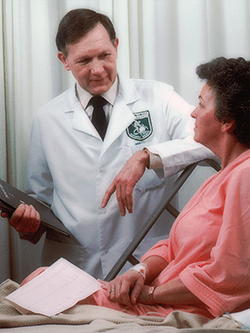
Important Highlights of the CMS Emergency Preparedness Guidelines
With the release of the Centers for Medicare and Medicaid Services (CMS) Emergency Preparedness Interpretive Guidelines, health care institutions across the US are working hard to meet the November deadline for implementation.
Appendix Z – Emergency Preparedness for All Provider and Certified Supplier Types Interpretive Guidance was specifically written to allow for interpretations that correspond to unique local factors. This publication serves as an overview on how these interpretations can bolster preparedness during disasters and emergency situations.
This article includes direct references to individual pages of CMS’s Interpretive Guidelines to clarify the important points regarding their core directives. Two of the most important points were the need for health care organizations to be fully prepared for worst case scenarios by strengthening communication channels, and the importance of community outreach to achieve this goal.
 CMS Advised Content for the Written Emergency Plan
CMS Advised Content for the Written Emergency Plan
The primary goal set forth in the Interpretive Guidelines was the formulation of a clear disaster and emergency preparedness plan. And, It is recommended to update and review the written emergency plan on an annual basis (Page 14).
Five points were emphasized in the Interpretive Guidelines and were used as survey queries for departmental leadership in several federal response agencies.
- The identification of patients who would be the most at risk in the event of an emergency or disaster
- Strategies in place to address the needs of these at risk patients and other vulnerable members of the facility
- A list of services the facility would be able to provide during an emergency event
- Strategies in place for how the facility can remain operational during an emergency event
- Detailed plans of staff succession and the facility’s parameters for the delegation of authority
These main points are identified as general factors for a health care organization’s written emergency plan; however, they can vary depending on the nature of the facility itself. For example, several guidelines included in the Appendix do not apply to transplant centers. Emergency planners should read through the Interpretive Guidelines in its entirety to confirm which apply to their particular facility.
Communication Needs for Enhanced Preparedness
Emergency planners for health care organizations need to maintain a reliable network of communications at all times that extend to both on and off-duty staff members. This allows for better coverage and more efficient handling of logistical concerns during emergency events.
The facility’s communication process should be subject to annual review as well. The following are some considerations included in the Interpretive Guidelines:
- The need for a reliable method of communicating with all on-duty staff members, residents and patients present in the facility during times of emergency (Page 25).
- An equally reliable method of communicating with off-duty staff members to deal with contingencies and advanced emergency response (Page 35).
- A communication plan should also include metrics for staff members and faculty to include the exact amount of provisions (food, medical supplies, etc.) that will be required at a facility during an emergency (Page 22).
- Open and accessible communications from the facility to members of the local community and emergency management agencies and systems, for better coordination of patient care (Page 41).
Communication Needs during Emergency Events and Evacuations
The Interpretive Guidelines call for a comprehensive, all-hazards approach to disaster and emergency preparedness. And, if implemented, the efforts will result in a facility that continues to function during a crisis event. Particular emphasis is placed on collaboration between the health care facility and the local community.
Emergency plans should also include the procedures to follow in case the need to evacuate arises. The role for each staff member involved in this process should also be clearly defined. This cooperation with the local community can make a significant impact on successfully getting everyone out of harm’s way. The following are noteworthy citations from the CMS document:
- There should be both primary and alternative methods of communication available to all staff members of a health care facility, and there is leeway for organizations to determine their alternate methods (Page 46).
- Communication plans need to contain provisions for intercommunications with state and local response agencies to coordinate their efforts during emergency events and evacuations that require patient moves (Page 31).
- Receiving facilities should always consider the logistical and staffing needs required for the management of the sudden influx of patients that is likely to occur during emergency events such as natural disasters (Page 11).
- Communication plans should include procedures in place for health care facilities to share information on patient occupancy in case the need arises to evacuate and/or transfer patients with special needs (Page 49).
Complying with the CMS Emergency Preparedness Guidelines with Regroup
With the November 15 deadline for implementation fast approaching, facilities are encouraged to perform comprehensive risk assessments using an “all-hazards approach” to identify any potential areas of non-compliance.
One of the most important points made in CMS’s Interpretive Guidelines is establishing the primary and alternative methods of communication that are required for compliance and important for the coordination of staff, contractors and members of the community.
Regroup’s clinical communication and collaboration technology can support health care facilities and organizations of any size or complexity. If you would like more information on Regroup Mass Notification and how we can help your facility comply with the new preparedness guidelines, please call us at 1-855-REGROUP or email inquires@regroup.com for a customized demonstration.
 CMS Advised Content for the Written Emergency Plan
CMS Advised Content for the Written Emergency Plan